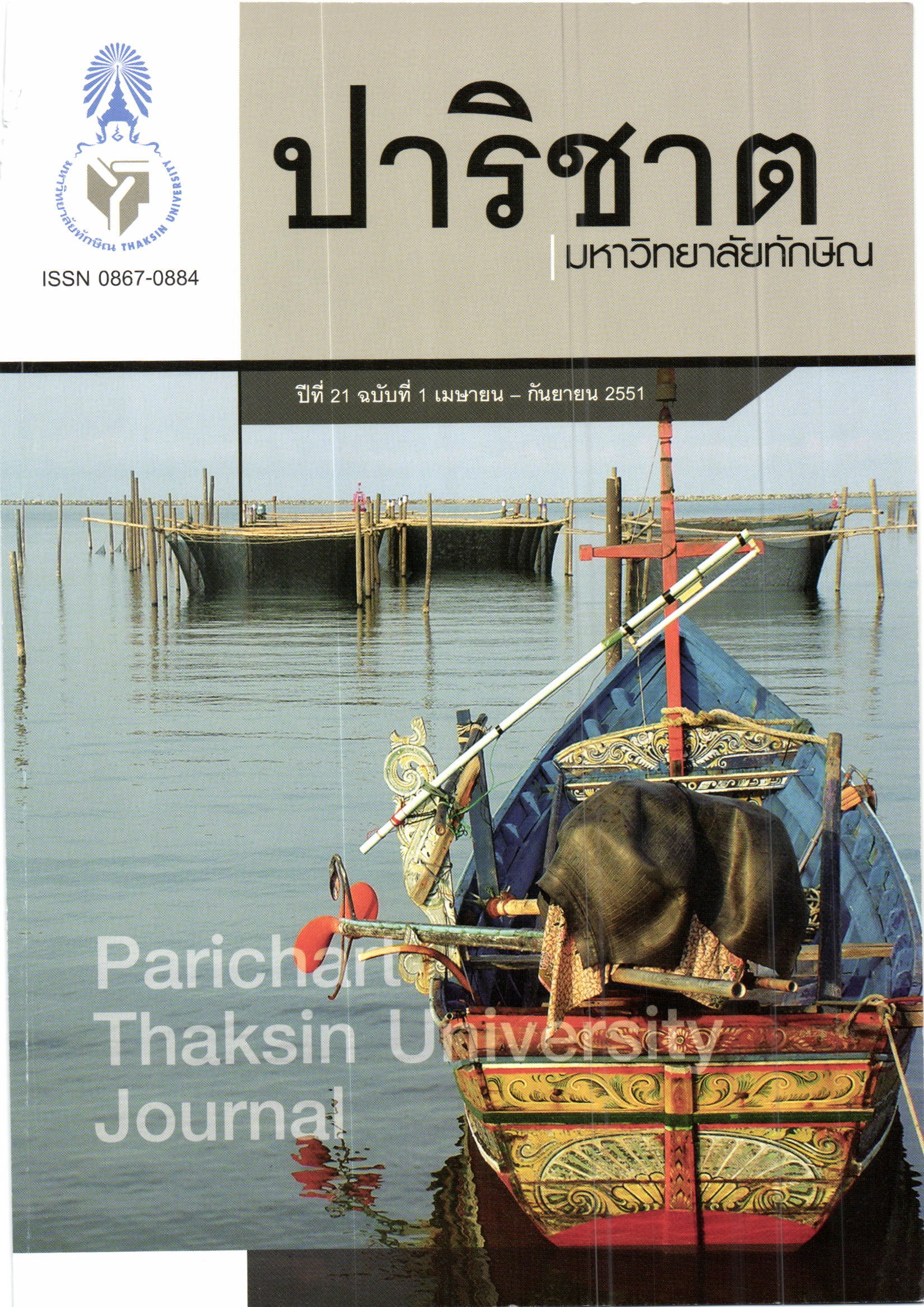การศึกษาประสบการณ์อาการและการจัดการอาการจากภาวะซึมเศร้าของวัยรุ่นหญิงโรงงเรียนระดับมัธยมศึกษาตยอนปลายในภาคใต้
Main Article Content
Abstract
ผลการศึกษา พบว่า กลุ่มตัวอย่างทุกคนรับรู้ว่ามีอาการในกลุ่มอาการด้านอารมณ์ รองลงมารับรู้ว่ามี อาการในกลุ่มอาการด้านความคิด พฤติกรรม (ร้อยละ 98.1) และมีอาการในกลุ่มอาการด้านร่างกาย (ร้อยละ 44.7) เมื่อ พิจารณากลุ่มอาการด้านอารมณ์ พบว่ากลุ่มตัวอย่างมีความรู้สึกเป็นทุกข์จนอยากร้องไห้ (ร้อยละ 90.3) ในกลุ่มอาการด้าน ความคิดพฤติกรรมกลุ่มตัวอย่างมีความรู้สึกคิดอะไรไม่ออก(ร้อยละ83.5) และในกลุ่มอาการด้านร่างกายพบว่ากลุ่มตัวอย่างมีความรู้สึกนอนหลับๆตื่นๆและหลับไม่สนิท (ร้อยละ41.7)ส่วนระดับความรุนแรงของอาการจากภาวะซึมเศร้า พบว่ากลุ่มตัวอย่างมากกว่าร้อยละ50 รับรู้ว่าอาการทั้ง3 กลุ่มมีความรุนแรงในระดับ น้อยและกลุ่มตัวอย่างส่วนใหญ่ จัดการกับกลุ่มอาการทั้ง 3ด้านด้วยการผ่อนคลาย โดยทำกิจกรรมนันทนาการ
ผลการศึกษาครั้งนี้สามารถนำไปใช้เป็นข้อมูลในการช่วยส่งเสริมการเรียนรู้ และวิธีการจัดการกับอาการจากภาวะซึมเศร้าที่เหมาะสมให้กับวัยรุ่นหญิงในสถานศึกษาต่อไป
The purpose of this descriptive research was to examine the depression-related symptom experiences and symptom management strategies of female adolescents in senior high schools, southern Thailand. One hundred and three subjects were selected based on Kirk,s rule. All of them were identified as having depression using the criteria of Tavee et aThe research tool was a questionnaire consisting of 3 parts: (1) the personal data profile, (2) perception of depression symptoms questionnaire, and (3) the symptom management questionnaire.
Content validity was verified by 3 experts. Parts two and three of the questionnaire were tested for stability using the test-retest method. The percentage of agreement of depression symptoms, severity of depression symptoms, and symptom management questionnaire was more than 80, respectively The results revealed that all subjects perceived symptoms related to mood component; 98.1 percent perceived symptoms related to cognitive behavior component and 55.3 percent perceived symptoms related to somatic component. For mood component, 90.3 percent showed sadness and wanted to cry. For cognitive behavior component, 83.5 percent showed indecision. For somatic component, 41.7 percent showed insomnia. For the severity of depression, it was found that more than 50 percent rated all three depression symptoms at a low level. Considering symptom management revealed that the most of subjects symptom management within three components, used relaxing methods, among whom used entertainment activities
The results reflect the perception of depression symptoms and various methods in managing symptoms, which health teams can use for promoting female adolescents, knowledge of depression and promoting appropriate symptom management strategies for female school adolescents.


